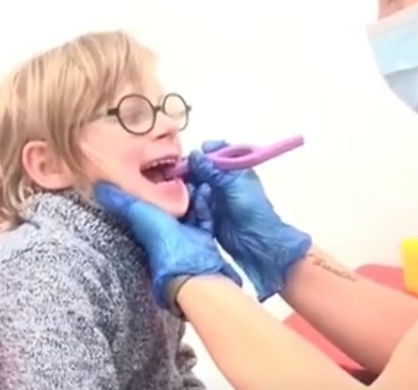5970 Centre St S, Unit 100 Calgary, AB, T2H0C1
Formerly known as SMILE Therapy for Kids Calgary
Help us fundraise for a medium Trexo Robot
Speech-Language Pathology

What does a Speech Language Pathologist Do?
At Canadian Centre for Development, our Calgary Pediatric Speech Language Pathologist helps children with most aspects of communication . Being that communication can come in many forms, such as body language, eye gaze, vocalizations, language, sign language, written, AAC (augmentative and alternative communication) and other expressions, these are all areas that our SLPs explore with clients.
Not sure which of our SLPs would be most fitting for your child and their challenges? If so, be sure to give us a call and we'd be happy to guide you in your decision.
The first appointment will allow us to learn all about your child and create a plan of action to get them to your/their goals.
Types of Communication Challenges:
At the Canadian Centre for Development we support all children whom are struggling with communicating their needs and wants. Most speech disorders fall into the following categories:
-
Speech delays and disorders including articulation, phonology and motor speech disorders
-
Language delays and disorders, including expression and comprehension in oral and non-verbal contexts
-
Voice and resonance disorders
-
Cognitive-communicative disorders including social communication skills, reasoning, problem solving and executive functions
-
Pre-literacy and literacy skills including phonological awareness, decoding, reading comprehension and writing
-
Neuromotor disorders that limit the child's ability to communicate orally
Conditions that we see at CCD are: Apraxia, Aphasia, Dysarthria, Hearing Disorders, Autism, Physical Disabilities, Late Talkers, Speech Delays, and others.
Specialty Techniques and Methodologies

Late talker, articulation
We can help your child develop their vocabulary, sentences, story telling, and clarity in speech!

Pre and Post Tongue-Tie Release Assessment and Therapy
Tongue-tie release therapy is a specialized approach designed to optimize oral function before and after a tongue-tie release procedure (frenectomy). Before the release, therapy focuses on preparing the oral muscles through exercises and techniques that improve strength, mobility, and coordination. After the procedure, therapy supports proper healing, prevents reattachment, and helps individuals achieve functional improvements in feeding, swallowing, and speech. This comprehensive approach ensures that the tongue and surrounding muscles adapt effectively, promoting long-term success and improved quality of life.

Augmented and Alternative Communication (AAC)
SLPs work closely with clients to assess their unique communication challenges, considering factors such as speech, language, and motor abilities. They then collaborate with individuals and their families to select appropriate AAC strategies and devices tailored to the individual's specific needs. SLPs provide training on the effective use of AAC systems, helping clients develop the skills to express themselves successfully.

